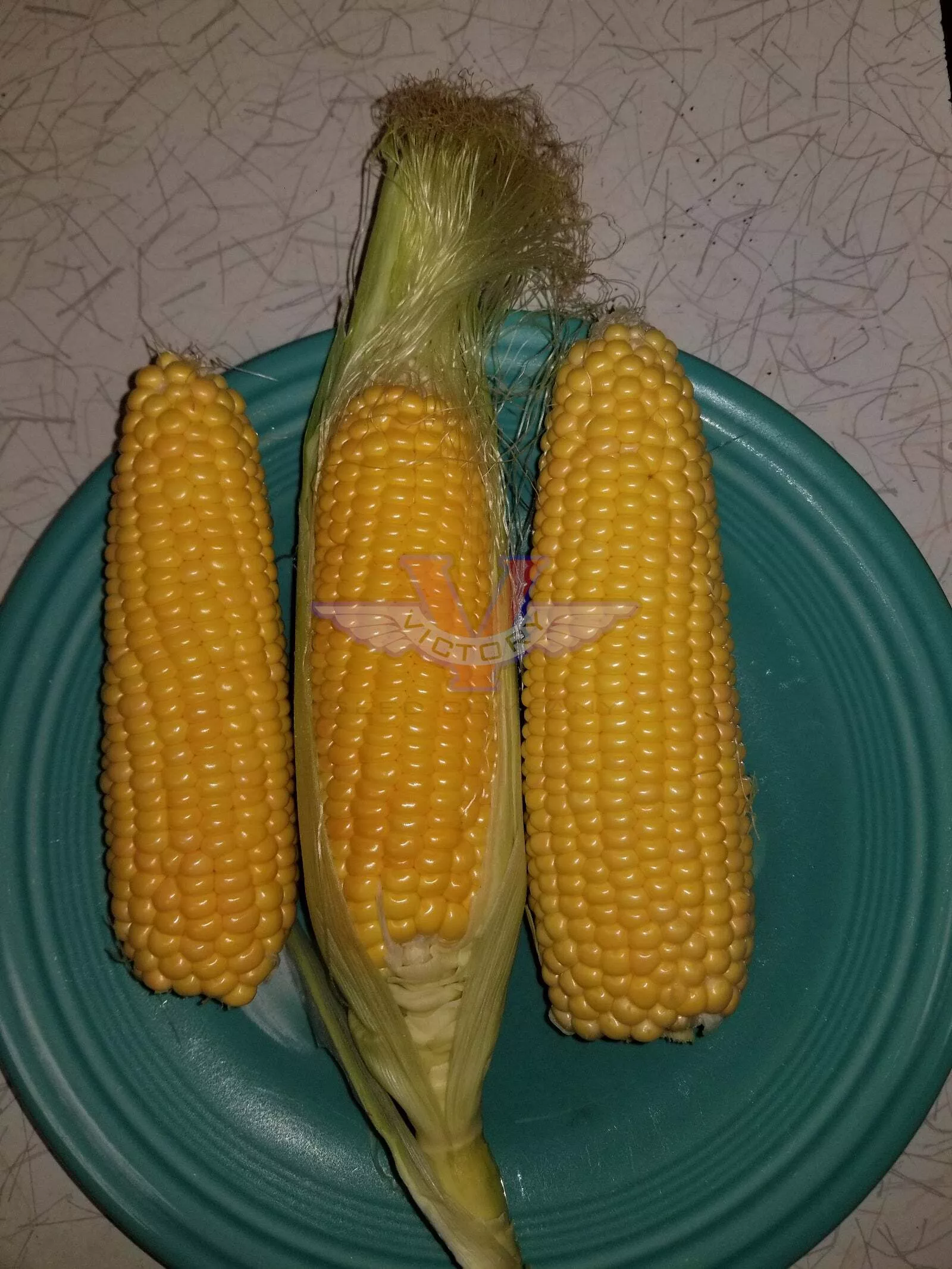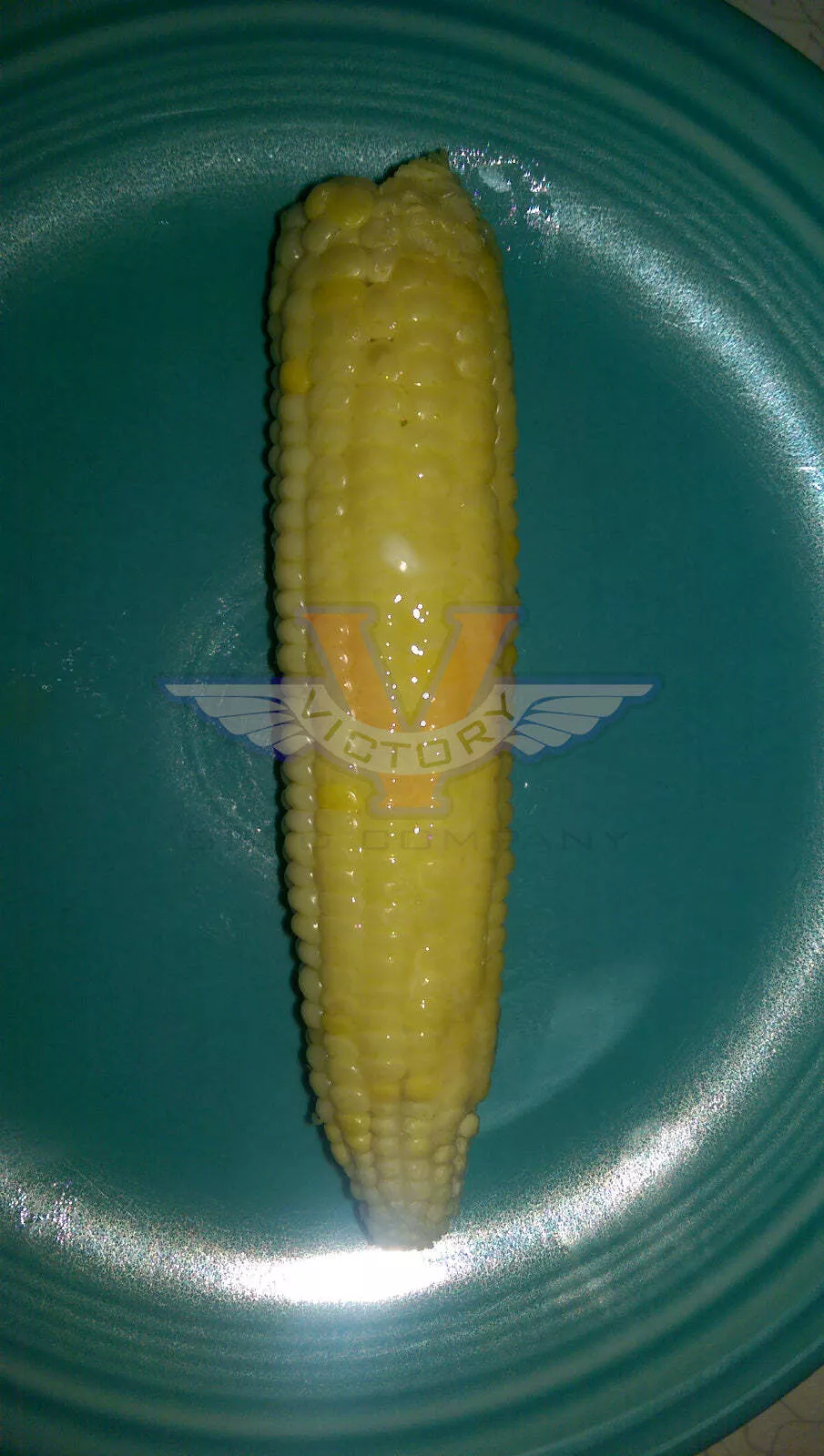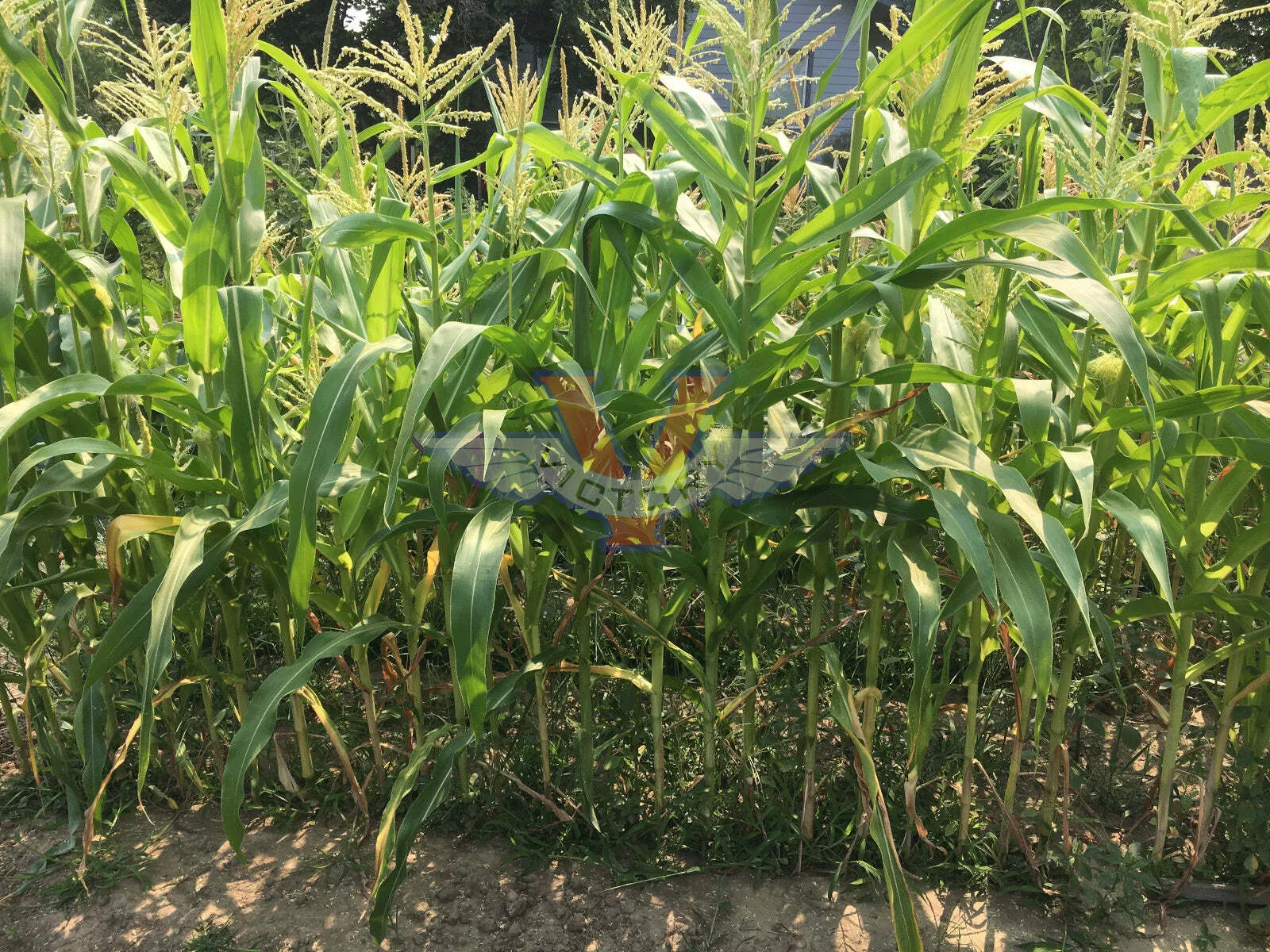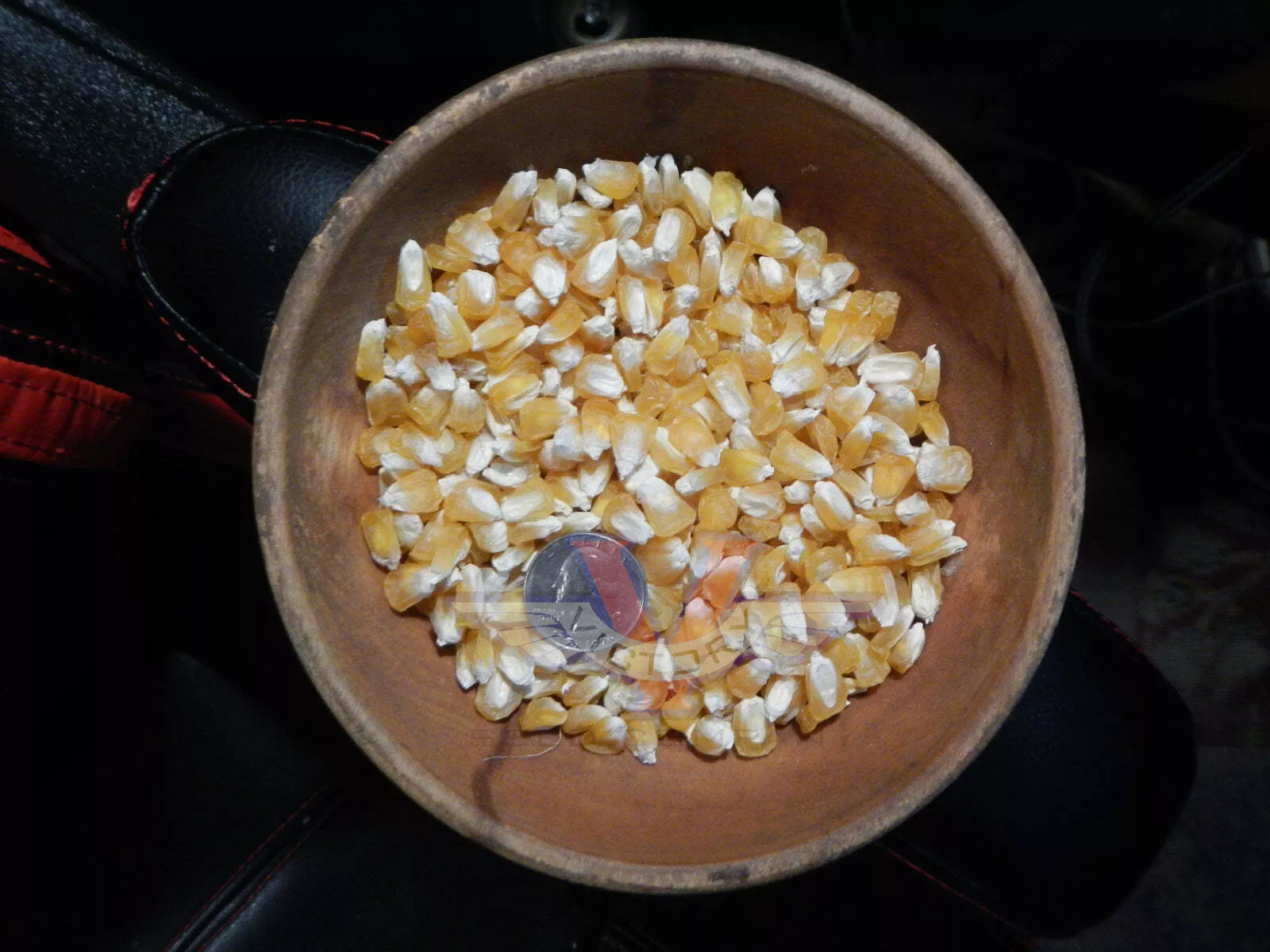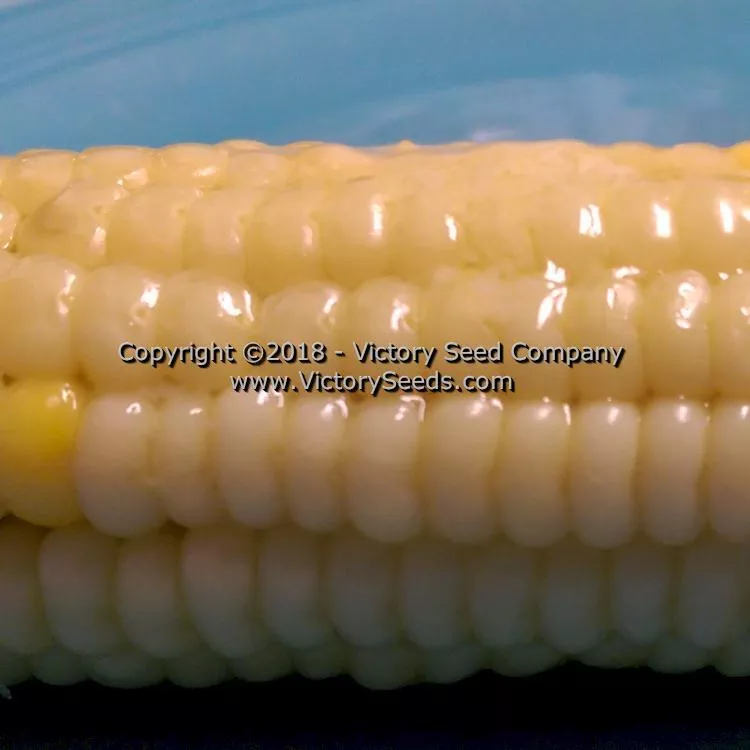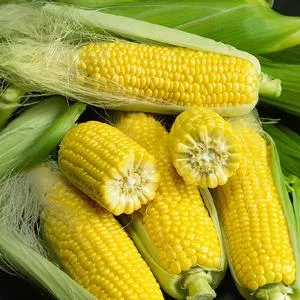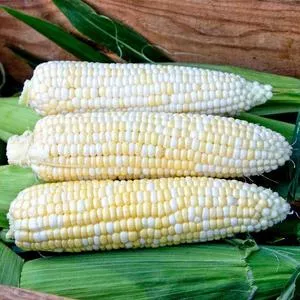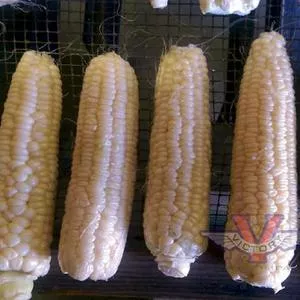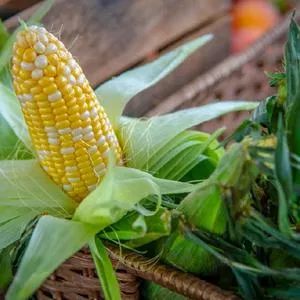




True Gold Sweet Corn
Zea mays subsp. mays
Price: $4.99
SKU: 31406411Choose a variant:
80 to 90 days - 'True Gold' is an excellent late season sweet corn variety that delivers tender, sweet, rich, and deliciously flavored ears. The stalks grow six to eight feet in height producing two to three ears per stalk. The ears reach about eight to nine inches in length containing sixteen to twenty-four rows of golden-orange kernels. Tolerates cooler soil temperatures better than most corn varieties.
Although relatively long-standing, like most older varieties of corn, ears should be processed or eaten within a few hours of harvest to reap the fullest, sweetest flavor experience.
Laboriously de-hybridized and stabilized from the old, and very popular, F1-hybrid sweet corn variety called 'Golden Jubilee'. This work was done by Dr. Alan "Mushroom" Kapuler[1] and originally introduced by Peace Seeds of Corvallis, Oregon.[2] If you are one of the many gardeners who purchase and plant 'Golden Jubilee' every year and wish you could save your own seed, 'True Gold' is the open-pollinated option.
Our seed was grown by one of our Grower's Network members in Northeastern Washington State and whose original source was Seeds of Change.
Although relatively long-standing, like most older varieties of corn, ears should be processed or eaten within a few hours of harvest to reap the fullest, sweetest flavor experience.
Laboriously de-hybridized and stabilized from the old, and very popular, F1-hybrid sweet corn variety called 'Golden Jubilee'. This work was done by Dr. Alan "Mushroom" Kapuler[1] and originally introduced by Peace Seeds of Corvallis, Oregon.[2] If you are one of the many gardeners who purchase and plant 'Golden Jubilee' every year and wish you could save your own seed, 'True Gold' is the open-pollinated option.
Our seed was grown by one of our Grower's Network members in Northeastern Washington State and whose original source was Seeds of Change.
Genetic Classification: Open Pollinated
Planting Instructions:
Soil must be at least 65ºF to germinate. Be patient and do not plant too early or you will waste a lot of seed! Plant in full sun and keep it watered. Corn is a wind-pollinated plant. Plant in blocks several rows wide to ensure full ears.
Sow seeds about 1½ to 2½ inch deep, 3 to 4 inches apart, in rows spaced 24 to 30 inches apart. Thin to 6 to 12 inches apart.
Sow seeds about 1½ to 2½ inch deep, 3 to 4 inches apart, in rows spaced 24 to 30 inches apart. Thin to 6 to 12 inches apart.
Informational Sources and Notes:
- Dr. Alan Kapuler founded Peace Seeds in 1975, which actually became the original template for what became Seeds of Change, which he helped to co-found in 1989. He brought to Seeds of Change his seed collection, knowledge, and scientific background, and served as the company's Research Director.
- "Seed Savers Exchange Yearbook," Seed Savers Exchange, Decorah, Iowa, 1998.
Customer Reviews:
Do you have experience with this one? 📝 📣 Write a review!
No reviews have been posted yet.

